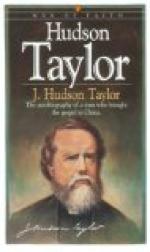It might also be stated that soon after the arrival of Hendrick Hudson at the mouth of the river one of the English soldiers, John Coleman, was killed by an arrow shot in the throat. “He was buried,” according to Ruttenber, “upon the adjacent beach, the first European victim of an Indian weapon on the Mahicanituk. Coleman’s point is the monument to this occurrence.”
The “Half Moon” never returned and it will be remembered that Hudson never again saw the river that he discovered. He was to leave his name however as a monument to further adventure and hardihood in Hudson’s Bay, where he was cruelly set adrift by a mutinous crew in a little boat to perish in the midsummer of 1611.
* * *
The sea just peering the headlands through
Where the sky is lost in deeper blue.
Charles Fenno Hoffman.
* * *
=Names of the Hudson.=—The Iroquois called the river the “Cohatatea.” The Mahicans and Lenapes the “Mahicanituk,” or “the ever-flowing waters.” Verrazano in 1524 styled it Rio de Montaigne. Gomez in 1525 Rio San Antonio. Hudson styled it the “Manhattes” from the tribe at its mouth. The Dutch named it the “Mauritius,” in 1611, in honor of Prince Maurice of Nassau, and afterwards “the Great River.” It has also been referred to as the “Shatemuck” in verse. It was called “Hudson’s River” not by the Dutch, as generally stated, but by the English, as Hudson was an Englishman, although he sailed from a Dutch port, with a Dutch crew, and a Dutch vessel. It was also called the “North River,” to distinguish it from the Delaware, the South River. It is still frequently so styled, and the East River almost “boxes the compass” as applied to Long Island Sound.
=Height of Hills and Mountains.=—It is interesting to hear the opinions of different people journeying up and down the Hudson as to the height of mountains along the river. The Palisades are almost always under-estimated, probably on account of their distance from the steamer. It is only when we consider the size of a house at their base, or the mast of a sloop anchored near the shore, that we can fairly judge of their magnitude. Various guides, put together in a day or a month, by writers who have made a single journey, or by persons who have never consulted an authority, have gone on multiplying blunder upon blunder, but the United States Geological Survey furnishes reliable information. According to their maps the Palisades are from 300 to 500 feet in height, the Highlands from 785 to 1625, and the Catskills from 3000 to 3885 feet.
* * *
Beneath the cliffs the river steals
In darksome eddies to the
shore,
But midway every sail reveals
Reflected on its crystal floor.
Henry T. Tuckerman.
* * *
THE PALISADES.
At Fort Lee 300 feet. Opposite Mt. St. Vincent 400 " Opposite Hastings 500 "
THE HIGHLANDS.




